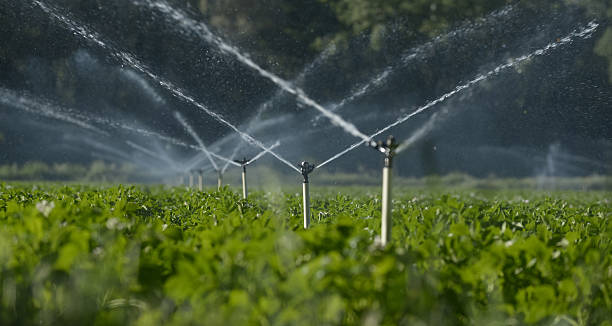The Rio Cobre Dam: Diverting with a Purpose
Water is an essential, but scarce resource, especially in food production which requires an adequate supply of water to grow the crops we need to survive. Our water supplies in Jamaica are becoming more and more vulnerable to environmental shocks and the impacts of climate change. As we observe World Water Day this year, let us reflect on the importance of this precious resource to life on earth.
Irrigated Agriculture in Jamaica
Agricultural production on many small farms in Jamaica is limited by a dependence on rain-fed agriculture (rainfall) or trucked water. However, irrigation increases the potential for production and productivity in agriculture. The total irrigable land in Jamaica is 90,000 hectares, however only 25,000 hectares or approximately 28% of this is currently being provided with water. A significant portion of the water resource used by the National Irrigation Commission Limited (NIC) is provided from surface water, which is harnessed from rivers such as the Rio Cobre in St. Catherine, Plantain Garden River in St. Thomas, Milk River in Clarendon and the Rio Bueno in Trelawny. The remaining major sources include groundwater from deep wells which are harnessed by pumping. Examples of these sources are our systems in Mid-clarendon, Hounslow, New Forest/ Duff House, Yallahs and Colbeck.
Construction of the Rio Cobre Dam
The Rio Cobre irrigation system, which started in 1870, was the first major endeavour to develop irrigated agriculture and is regarded as the most important of all public works initiated by then Governor Sir John Peter Grant. The original construction of the Rio Cobre Dam, a diversion dam across the Rio Cobre river near Spanish Town in St Catherine, was completed between 1874 and 1876. However, the flood rains of May 21, 1991 resulted in the collapse of the Rio Cobre Dam and much disruption to irrigation and domestic water supplies to the St. Catherine Plains. Approximately 6,705 hectares (15,000 acres) of agricultural land and fresh water fish farms in Caymanas, Bernard Lodge, Innswood, Bushy Park, Hartlands, Hill Run and the Lawrence field areas of St. Catherine were affected. In addition, supplies to the National Water Commission Limited (NWC), which was procuring up to 2.5 million gallons of raw water daily from the Rio Cobre to the Spanish Town Treatment Plant to meet the domestic water requirements of Spanish Town and its environs, as well as supply to industrial plants in the area, were severely affected. The Rio Cobre Dam was reconstructed by May 1995 at a cost of J$257.5 million. To complement the reconstructed dam, improvements were made to the conveyance system, mainly involving the lining of earthen canals to prevent leakage. The Rio Cobre Dam reconstruction was recognized by the Institute of Civil Engineers as the Engineering Project of that year.
The Rio Cobre Dam Today
Today, it is the source of water for agricultural, industrial and domestic purposes, serving the St. Catherine Plains and communities in and around Spanish Town. The Rio Cobre Dam, which is owned by the NIC, continues to divert water from the river into an open canal for agricultural uses on the Plains of St. Catherine for up to 13,500 hectares (8,650 acres) to the south, as well as provide municipal water to Spanish Town. The NIC is an agency of the Ministry of Industry, Commerce, Agriculture and Fisheries, mandated to manage, operate, maintain and expand existing and future irrigation schemes and systems. The organization aims to enable improvement in agricultural productivity, production and prosperity through the provision of irrigation and related services. To this end, we continue to provide irrigation services to the agricultural sector as well as to some industrial and commercial users through some of our systems.




